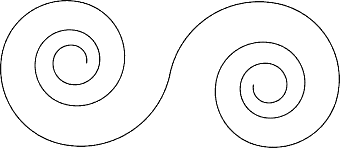
Left and Right
Left = Passive = Natural being.
Right = Active = What has been done with the talents.
In all examinations you should consult both
hands, and should never attempt specific statements, unless they are based
upon a thorough knowledge of the information which can be gleaned only from
the hands considered separately, and then together. Many failures are recorded
in palm-readings when one hand only has been used, due to the fact that people
change as they grow older, and these changes are recorded in the right hand.
If you have read from the left hand, you have looked at the subject only as
they were originally constructed, not as they have developed. To gain a knowledge
of them as they are, and thus better to tell whether they are progressing
or retrograding, you must read from both hands. This is a matter to which I
have given most careful study, and in the course of many investigations have
often read in the separate hands how weak people have grown strong, and strong
people deteriorated.
The left hand is the infallible index to the natural being, the right
hand record unmistakably what has been done with the talents.
Left handedness
All that has been said about using the left hand because it is nearest the heart
or because it has more lines, grows from a false conception of the matter. The
heart no more controls nor feeds the left than the right hand, and it is not
for this reason that both hands are used. The left hand is the passive hand,
the right the active. There are instances in which the subject is left-handed.
In this case reverse the order and consider the right as passive, the left as
active. Invariably the hand which does the work is the one which records
the present, the hand which is passive shows the natural endowments. Thus, if
you see the passive hand showing one condition, the active hand an improved
state, you know that the course has been upward, and vice versa.
